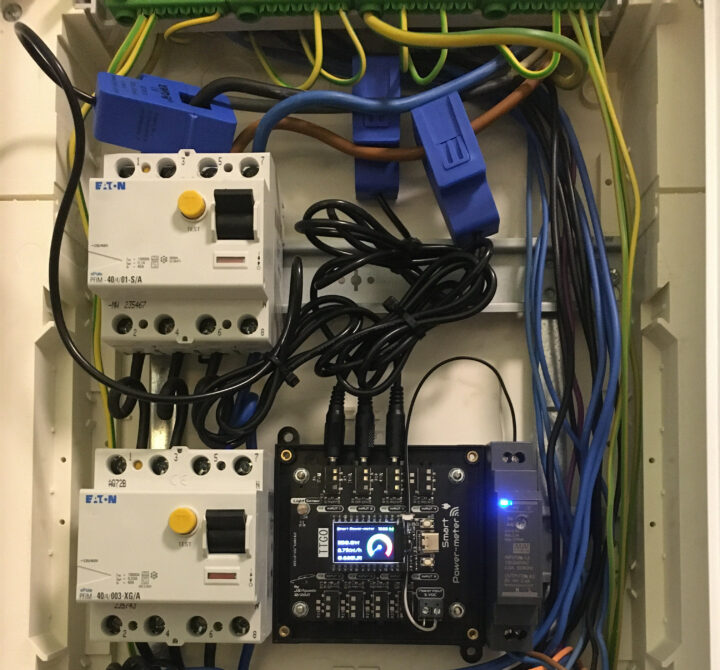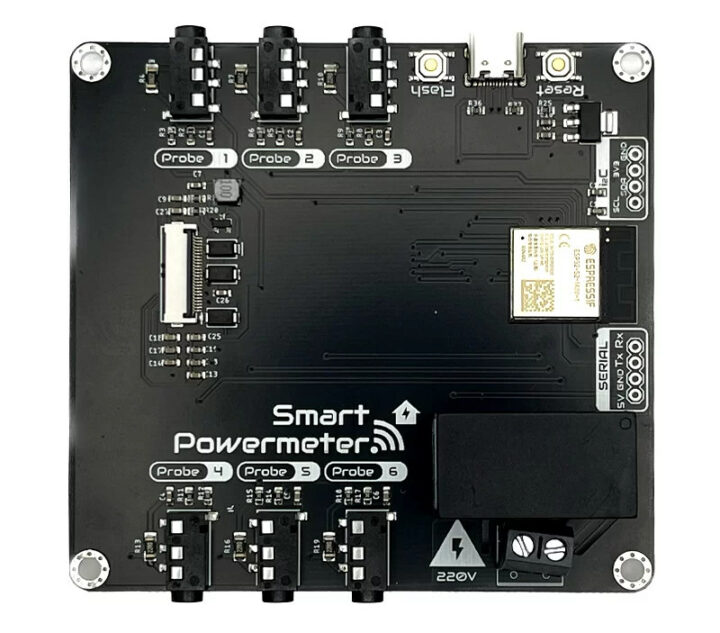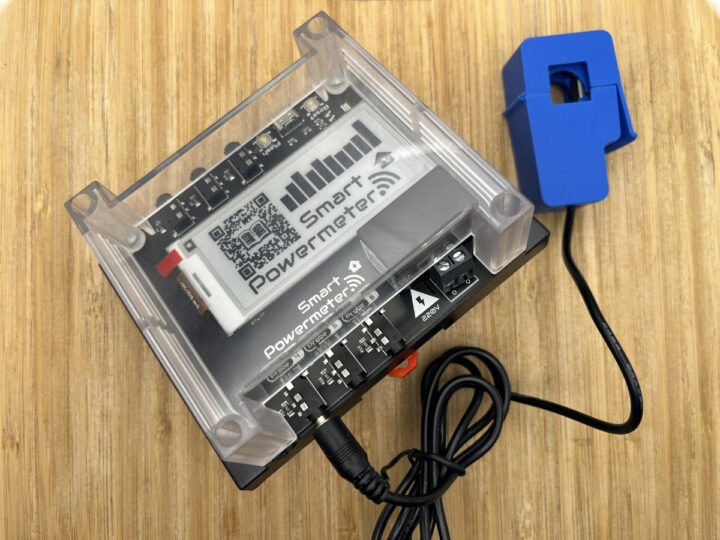J.G.Aguado’s “Smart Powermeter” is an ESP32-S2 board with a 2.9-inch e-paper display designed to measure power consumption through up to six CT clamps, or Current Transformer clamps, that are each attached to one of the AC lines of a house or appliance.
I used an MT87 Digital Clamp Multimeter nearly 10 years ago to easily and safely measure the power consumption of a whole house by simply clamping it on one of the cables outside and reading the results on the display. The Smart Powermeter works in the same way but can perform measurements for up to six devices, and besides seeing the results on the display the ESP32-S2 can also send the data to the cloud or local server for data gathering and analysis using ESPHome or Arduino firmware.
Smart Powermeter specifications:
- Wireless module – ESP32-S2-MINI-1-N4R2
- SoC – Espressif ESP32-S2FH4
- CPU
- Single-core 32-bit LX7 microcontroller @ up to 240 MHz
- RISC-V ultra-low-power co-processor
- 320 kB SRAM, 128kB ROM
- 2.4 GHz WiFi 4 connectivity
- CPU
- Memory – 2MB PSRAM
- Flash – 4MB flash
- PCB antenna
- SoC – Espressif ESP32-S2FH4
- Display – 2.9-inch e-Paper display
- USB – 1x USB Type-C port
- Sensors – Up to 6x SCT-013 series CT-clamps
- Other interfaces – UART and I2C headers
- Misc – Flash and Reset buttons
- Power Supply
- AC Input – 100-240VAC | 50-60Hz OR
- DC Input via USB – 5V @ 500mA for programming and testing purpose
- Dimensions
- Board – 92 x 87 x 20mm
- Enclosure – 115x90x40mm with enclosure
- Weight – 60grams, or 130grams with enclosure

The Smart Powermeter can be programmed with ESPHome firmware for easy integration with Home Assistant or the Arduino IDE for users wanting to develop their own firmware. You’ll find instructions to get started with either and more technical details on Readthedocs.io and GitHub.
J.G.Aguado used to sell small quantities of those on Tindie, but now the Smart Powermeter is available on Elecrow for $19.99 and up. But the lowest price is for the board only, and a complete system with display, enclosure, and six CT clamps goes for $61.96.


Jean-Luc started CNX Software in 2010 as a part-time endeavor, before quitting his job as a software engineering manager, and starting to write daily news, and reviews full time later in 2011.
Support CNX Software! Donate via cryptocurrencies, become a Patron on Patreon, or purchase goods on Amazon or Aliexpress






